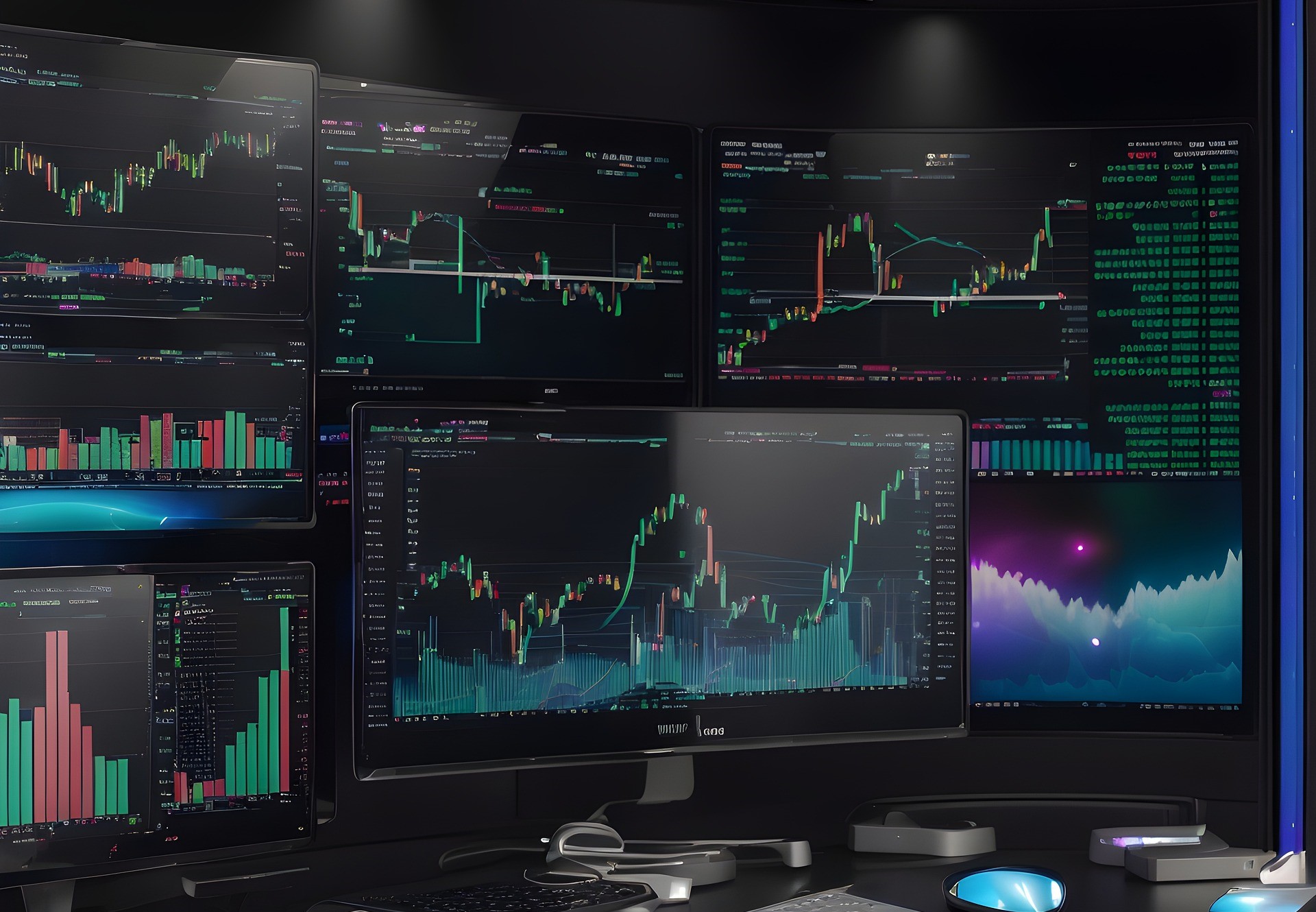The foreign exchange market, or Forex, is a vast and dynamic landscape where currencies are constantly traded. Navigating this complex environment requires a keen understanding of market movements and trends. Fortunately, a diverse array of tools are available to equip traders with the knowledge and insight needed to make informed decisions. This comprehensive guide delves into the essential toolkit of a Forex trader, exploring various functionalities and highlighting their role in maximizing trading success.
Importance of Forex Trading Tools
In the dynamic realm of Forex trading, the significance of employing advanced tools cannot be overstated. These tools serve as the navigational compass for traders, offering insights, analysis, and real-time information crucial for making informed decisions. In a market where seconds matter, having the right tools at your disposal empowers traders to swiftly interpret trends, identify potential entry or exit points, and stay ahead of market movements.
Moreover, Forex trading tools contribute to risk mitigation and management. The ability to set stop-loss orders, utilize position sizing calculators, and employ other risk management tools is paramount. This not only protects traders from substantial losses but also fosters a disciplined and strategic approach to trading. In essence, the importance of Forex trading tools lies in their ability to transform the complex and fast-paced Forex market into a more navigable and controlled environment for traders of all levels.
Types of Forex Trading Tools
| Types of Forex Trading Tools | Description | Examples |
| Technical Analysis Tools | Tools used to analyze historical price data and predict future price movements based on patterns and indicators. | Candlestick Charts, Trend Lines, Indicators (Moving Averages, RSI, MACD) |
| Fundamental Analysis Tools | Tools used to assess the economic, social, and political factors that influence currency values. | Economic Calendars, News Feeds, Market Sentiment Analysis |
| Trading Platforms | Software applications that provide access to the Forex market, allowing traders to execute trades, analyze charts, and manage accounts. | MetaTrader 4 and 5, cTrader, NinjaTrader |
| Risk Management Tools | Tools used to minimize potential losses and protect capital by setting parameters for trade entry, exit, and position sizing. | Stop-Loss Orders, Take-Profit Orders, Position Sizing Calculators |
In Forex trading, various tools are utilized to facilitate analysis, execution, and risk management. These tools can be broadly categorized into four main types:
- Technical Analysis Tools: These tools are instrumental in analyzing historical price data and identifying patterns or trends that may indicate potential future price movements. Candlestick charts, trend lines, and a variety of technical indicators such as moving averages, Relative Strength Index (RSI), and Moving Average Convergence Divergence (MACD) are commonly used technical analysis tools.
- Fundamental Analysis Tools: Fundamental analysis tools focus on assessing the underlying factors that influence currency values, including economic indicators, geopolitical events, and market sentiment. Economic calendars, which provide schedules of key economic releases and events, news feeds from reputable sources, and market sentiment analysis tools are examples of fundamental analysis tools.
- Trading Platforms: Trading platforms are software applications that enable traders to access the Forex market, execute trades, analyze price charts, and manage their trading accounts. Popular trading platforms such as MetaTrader 4 and 5, cTrader, and NinjaTrader offer a wide range of features and functionalities to cater to the diverse needs of traders.
- Risk Management Tools: Risk management tools are essential for safeguarding capital and minimizing potential losses in Forex trading. These tools allow traders to set parameters for trade entry, exit, and position sizing. Common risk management tools include stop-loss orders, which automatically close a trade at a predetermined price level to limit losses, take-profit orders, which automatically close a trade at a predefined profit level, and position sizing calculators, which help determine the appropriate position size based on risk tolerance and account size.
By utilizing a combination of these Forex trading tools, traders can enhance their decision-making process, manage risks effectively, and improve their overall trading performance.
Technical Analysis Tools
Technical analysis tools play a pivotal role in the toolkit of every Forex trader, offering valuable insights into market trends and potential price movements. These tools can be broadly categorized into two main types:
Candlestick Charts and Trend Lines
Candlestick charts provide a visual representation of price movements, displaying open, high, low, and close prices for a specific time period. Traders use candlestick patterns to identify potential reversals or continuation of trends. Trend lines, on the other hand, help delineate the direction of the market, assisting traders in recognizing key support and resistance levels.
Indicators: Moving Averages, RSI, MACD
Technical indicators further refine market analysis by quantifying price data. Moving averages smooth out price fluctuations, revealing underlying trends. The Relative Strength Index (RSI) gauges the magnitude of recent price changes, indicating overbought or oversold conditions. The Moving Average Convergence Divergence (MACD) highlights potential shifts in market momentum. Combining these indicators provides traders with a comprehensive technical analysis toolkit, aiding in more informed decision-making.
Fundamental Analysis Tools
Fundamental analysis tools are instrumental in providing traders with a comprehensive understanding of the factors that influence currency values. Here, we delve into two key categories of fundamental analysis tools:
Economic Calendars:
- These calendars serve as crucial resources, outlining scheduled economic events, releases, and indicators.
- Traders use economic calendars to stay informed about announcements such as interest rate decisions, employment figures, and GDP reports.
- By tracking these events, traders gain insights into potential market volatility and can adjust their strategies accordingly.
News Feeds:
- News feeds from reputable sources offer real-time updates on economic, political, and social events that may impact the Forex market.
- Traders rely on breaking news to make swift and informed decisions, responding promptly to changes in market sentiment.
- A well-informed trader can anticipate market reactions and position themselves strategically, leveraging the power of timely information.
Market Sentiment Analysis:
- Understanding market sentiment is critical for successful trading, and tools that analyze sentiment provide valuable insights into the collective mood of market participants.
- Traders gauge whether the market is bullish, bearish, or neutral, helping them align their strategies with prevailing sentiment.
By incorporating these fundamental analysis tools into their strategies, traders can gain a holistic perspective on the market, making more informed decisions based on economic indicators, breaking news, and the prevailing sentiment.
Trading Platforms
Trading platforms are the backbone of the Forex trading experience, providing traders with the tools and interface necessary to engage with the market. This integral component can be explored in two main facets:
MetaTrader 4 and 5:
- MetaTrader 4 (MT4) and MetaTrader 5 (MT5) are widely acclaimed platforms, known for their user-friendly interfaces and extensive features.
- Traders can execute orders, analyze charts, and employ automated trading strategies with the help of Expert Advisors (EAs) on both platforms.
- The availability of a vast library of technical indicators and charting tools enhances the analytical capabilities of traders, making MT4 and MT5 preferred choices for many.
cTrader, NinjaTrader, and Beyond:
- cTrader is recognized for its intuitive design and fast order execution, making it an appealing choice for traders who prioritize a seamless and efficient trading experience.
- NinjaTrader, on the other hand, is distinguished for its advanced charting and analysis tools, catering to more sophisticated traders and algorithmic trading enthusiasts.
- Beyond these, various other trading platforms offer unique features, catering to different trading styles and preferences, such as TradingView, Thinkorswim, and cAlgo.
Trading platforms act as the gateway to the Forex market, enabling traders to place orders, access real-time market data, and manage their portfolios. The diversity in available platforms ensures that traders can find one that aligns with their specific needs and preferences, whether they prioritize user-friendly interfaces, advanced analysis tools, or seamless automation capabilities. As technology continues to evolve, these platforms will likely see further enhancements, providing traders with even more sophisticated and efficient tools for navigating the complexities of the Forex market.
Risk Management Tools
Risk management tools are paramount in the world of Forex trading, serving as the safeguard against potential financial pitfalls. These tools are designed to assist traders in mitigating risks associated with market volatility and unpredictable fluctuations. Among the essential risk management tools are stop-loss orders, which automatically close a trade at a predetermined price level to limit potential losses, and take-profit orders, ensuring that profitable trades are closed at predefined levels.
Moreover, position sizing calculators are integral for determining the appropriate size of a position based on risk tolerance and account size. By utilizing these tools collectively, traders can establish a disciplined approach to risk, protecting their capital and fostering a more sustainable and controlled trading strategy. In the dynamic and often unpredictable Forex market, the effective use of risk management tools is a cornerstone for traders aiming for long-term success and stability.

